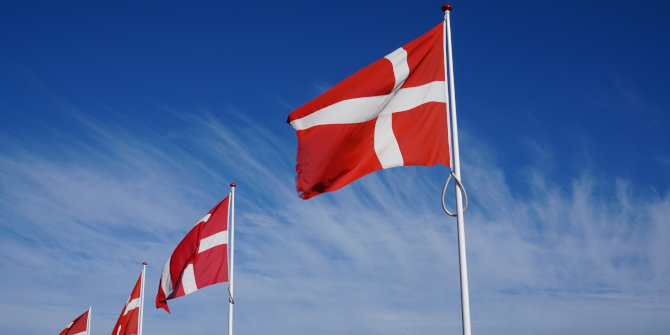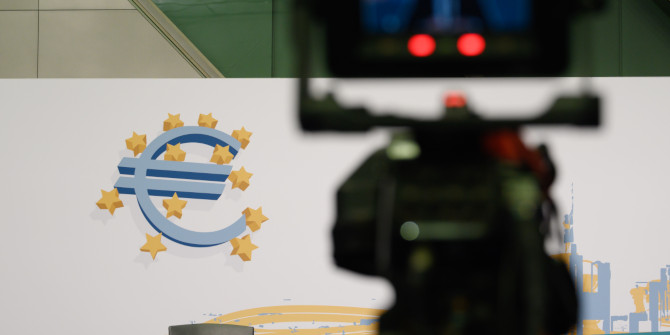 Ahead of Denmark’s next general election, which must be held by June this year, the country’s Social Democrats have outlined a new and more restrictive approach to immigration. Peter Nedergaard writes that the new plan offers international solutions founded in the roots and ideology of the party, and could offer a model for other social-democratic parties struggling to deal with the immigration issue.
Ahead of Denmark’s next general election, which must be held by June this year, the country’s Social Democrats have outlined a new and more restrictive approach to immigration. Peter Nedergaard writes that the new plan offers international solutions founded in the roots and ideology of the party, and could offer a model for other social-democratic parties struggling to deal with the immigration issue.
The Danish Social Democratic Party has adopted a new and more restrictive immigration policy. It has already gained much attention in international media and it has been the basis of several meetings among social-democratic parties across Europe.
With the new policy, the party seeks to reduce the number of immigrants coming to Denmark, support refugees outside Europe and strengthen efforts to integrate people from non-Western countries already living in Denmark. The policy has a strong focus on limiting the number of refugees and immigrants but it is also a plan in line with international conventions.
According to the new plan, Denmark should establish reception centres outside Europe in co-operation with other countries. Thus, the option of applying for asylum in Denmark would be eliminated. Instead, asylum-seekers would be sent to the reception centres in north Africa where their cases would be handled. If granted asylum, they would be transferred to the United Nations High Commission for Refugees, which would give them protection in a UNHCR camp or locally in the country where the centre is situated. Denmark would receive a number of quota refugees, but only through the UNHCR.
It is well known that there are difficulties when these reception centres are established. But, as can be seen in the case of Turkey, an attractive compensation scheme might loosen up many hindrances. In spite of criticism from NGOs, the EU-Turkey agreement on refugees is seen to work in accordance with the initiators’ objectives.
The internationalism aspect of the new Social Democratic plan aims not least to help as many refugees as possible for the same amount of money. As to how to help more, the party proposes that the EU and the international community join forces to carry out a historic boost to help Africa, inspired by the ‘Marshall plan’ for Europe after World War II.
The national aspect of the new policy concerns not least the issue of how better to integrate people from non-Western countries already living in Denmark: the party suggest sanctions to tackle segregation into ‘parallel societies’ and to strengthen efforts against social control. Integration is a two-sided process in the plan: one side is a restructuring of certain aspects of housing and schooling on the part of the Danish authorities; the other side is an active adaption to ‘Danish values’ (see below) on the part of the newcomers.

Credit: Matt Kieffer (CC BY-SA 2.0)
The roots of the new policy can be seen both in the economic burden of non-integrated immigrants and refugees upon the welfare system of Denmark, as well as in the history of the Social Democratic party itself. It argues that there is an immense challenge from continued immigration into Denmark from developing countries where relatively few people contribute relatively little through their work: ‘The challenge we are facing is not temporary. It is here to stay. It will put pressure on our welfare model, our low degree of inequality as well as on our way of living.’ ‘Our’ in this key sentence seems to mean both ‘social democrats’ (as they see themselves as the prime sponsors of the Danish welfare model) and ‘Danes’ (most of whom support the Danish welfare model, according to all opinion polls).
The Danish welfare model is universalistic. It implies equal and free access to schooling, health services, pensions (the mere fact that one lives in Denmark accords the right to public pension schemes), elderly care, university education and so on. But it presumes that ‘the great majority contributes’ (through their work and taxes), ‘that we trust each other’ and ‘that there is a high degree of safety’. According to the Social Democratic Party’s plan, this means that foreigners are welcomed if they contribute and ‘become part of society’.
The key phrase mentioned repeatedly is that they should become ‘a part of Denmark’, which means that they should work and accept Danish values, such as the supremacy of democracy over religion, gender equality, freedom of speech and active citizenship. These values are general Western values but, in the eyes of Danish decision-makers, they are accentuated in modern Denmark.
Generally, the Danish welfare model is considered vulnerable to immigration in various investigations. This is especially the case when too many arrive who are unable to provide for themselves and who are, therefore, seen through a socio-economic lens as ‘an expense for society’. According to the Ministry of Finance, the economic challenge of immigration from developing countries into Denmark costs the state approximately DKK 34 billion (€4.5 billion) per year when taxes paid are compared with the cost of welfare services provided. This is almost equivalent to the total cost of running the primary-school system in Denmark. The official calculation is important in the political discourse because this ministry is normally regarded as credible and impartial in such regards.
In consequence, an objective of the Social Democratic plan is to make a clear distinction between these two groups. Refugees should only be allowed in as UN quota refugees, and migrants should only be allowed in if they have specialised skills needed in the Danish labour market. The calculation of the costs of third-world immigration does not mean that non-economic factors – such as crime rates, cultural clashes, fear of politically-motivated violence and so on – have not also played a role in the party’s policy U-turn. But the cost figures from the Ministry of Finance have without doubt been very important.
As for the historical context, the change in policy direction is also a change in the party’s core philosophy, and should be seen against a backdrop of broader policy developments going back 30-40 years. Back then – as evidenced in the book Welcome Mustafa by the member of Parliament Mattias Tesfaye – the party’s stance on immigration policy was very restrictive. It acted in accordance with the interests of the unskilled and skilled workers as reflected in the trade unions’ position. At that time, mainly the employers’ side promoted a liberal immigration policy.
The new policy can be seen as a sign of an incipient revolt against the dominant liberal, pro-immigration discourse in many circles in Europe. What is new in the party’s plan is that it offers a justification of a U-turn which is seemingly perceived as solid and coherent. Most importantly, it offers international solutions founded in the roots and ideology of the party, and in line with the preferences of its potential working-class voters. Inside the party, it is therefore not seen as a sell-out to other political ideologies.
Social-democratic parties across Europe are in deep trouble, and some have declined considerably during recent elections. Their inability to deal with the immigration issue seems to be a significant factor. It is important to be open-minded and not to be caught up in preconceived ideas. The Danish Social Democratic plan offers new ideas, which have become the basis for support sufficiently stable and strong in the opinion polls for almost all prognoses to point towards a Social Democratic takeover in the parliamentary election due in the spring.
Please read our comments policy before commenting.
Note: For more information, see the author’s accompanying paper. This article gives the views of the author, not the position of EUROPP – European Politics and Policy or the London School of Economics.
_________________________________
 Peter Nedergaard – University of Copenhagen
Peter Nedergaard – University of Copenhagen
Peter Nedergaard is a Professor in the Department of Political Science at the University of Copenhagen.




What the socialists also ignore in extolling the wonders of Socialism in the nordic countries is that Denmark has a population of only 6 million people and the population is homogeneous. The total population of the three Scandinavian countries is only 21 million, also homogeneous. Almost any system could work under these circumstances.
Mr Casey (not the former head of the CIA, are you?!), I disagree.
It seems a broadly sensible plan, though my caveat would be supervision and control of the North African arm of the operation.
Most refreshing is the lack of a false ‘racist’ branding, one that Britain’s Labour Party would do well to acknowledge.
You cannot keep stuffing the world’s unemployed into developed countries without reaching saturation point.
As always, employers welcome mass immigration. It drives wages down.